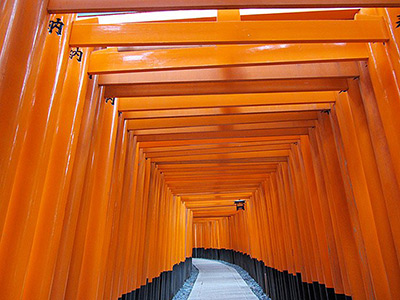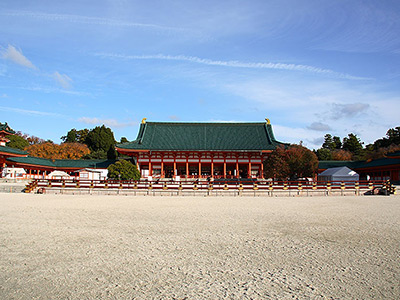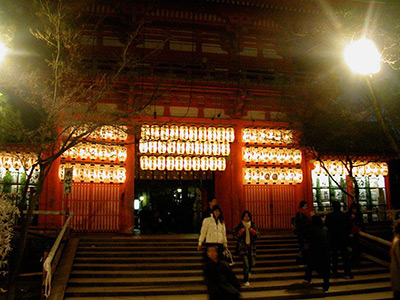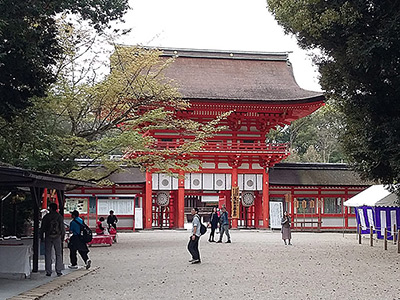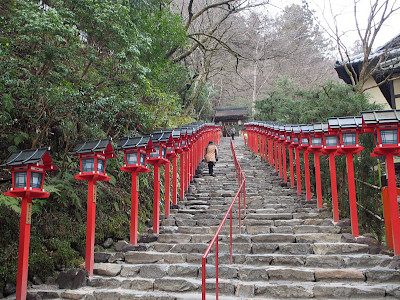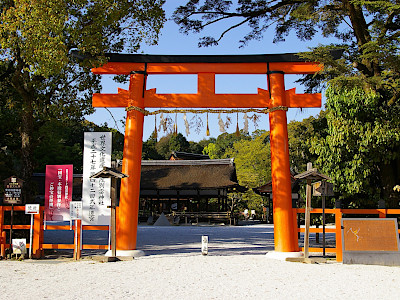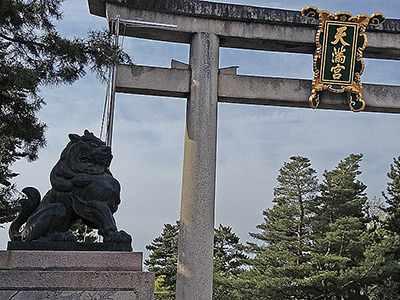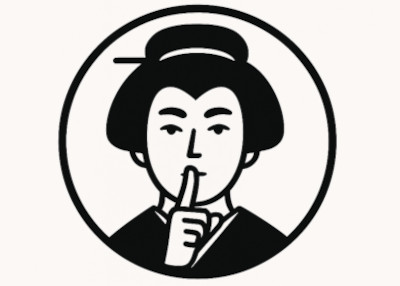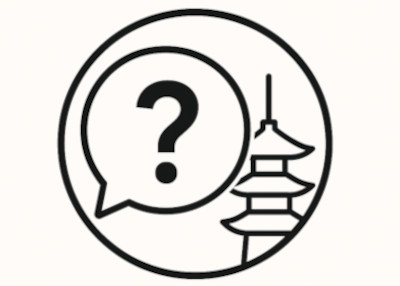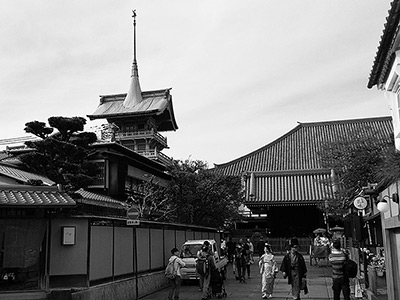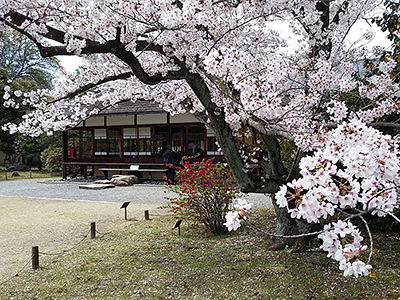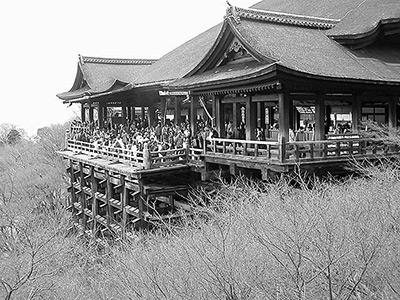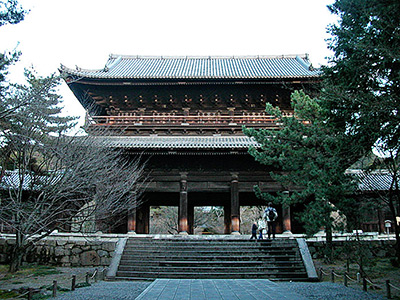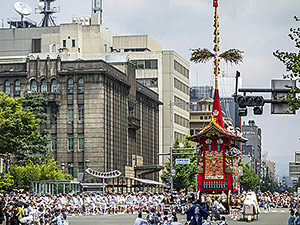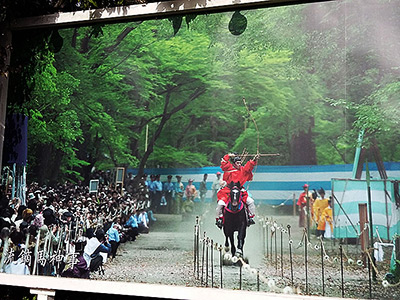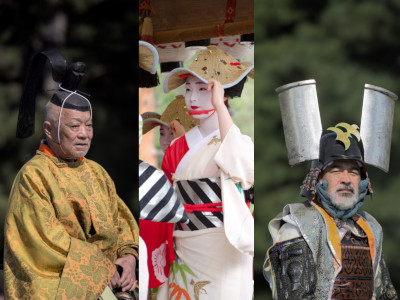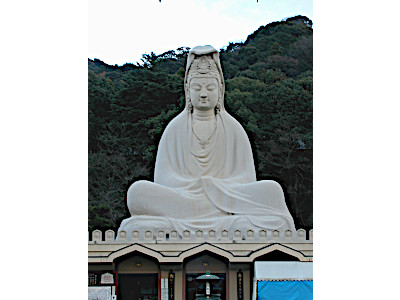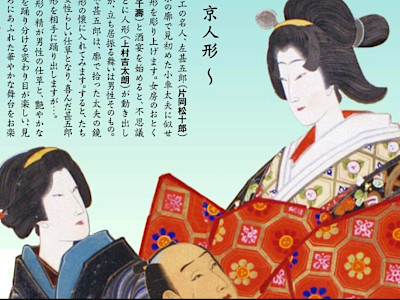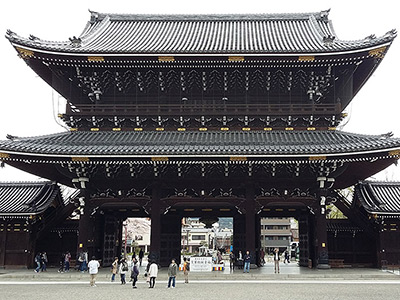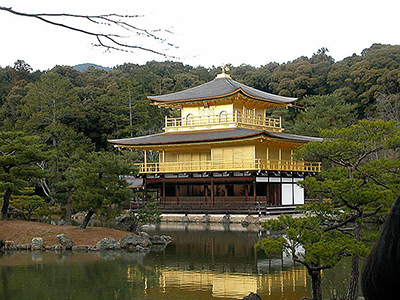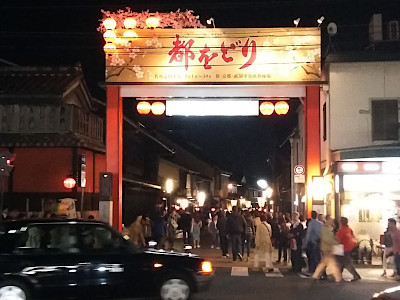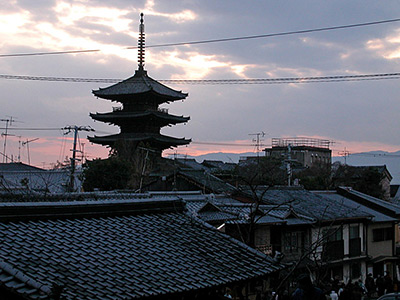Most Popular Shinto Shrines in Kyoto
This post can contain affiliate links, which means that we may receive a small commission if you make a purchase using these links.
Facts & Figures
The number of Shinto shrines in Kyoto can be overwhelming for first-time visitors, as there are a total of 2000 of them located all over the city. To help you navigate, I've selected the top 10 most popular shrines for you. You can visit all of them within 2 or 3 days and experience a delightful combination of beautiful architecture and traditional Japanese gardens. Some of these shrines have a history of over 1300 years and are designated as UNESCO World Heritage sites, Important Cultural Properties, and National Treasures. This is why Kyoto is the top travel destination in Japan.
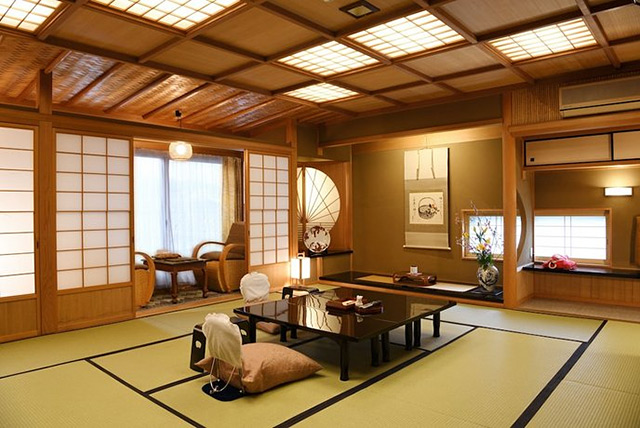 Experience the Ultimate Japanese Hospitality at a Kyoto Ryokan.
Experience the Ultimate Japanese Hospitality at a Kyoto Ryokan.
Find Your Perfect Ryokan Now >
- Overview of the 10 Most Popular Shinto Shrines in Kyoto:
- 1. Fushimi Inari-Taisha
- 2. Heian Shrine
- 3. Yasaka Shrine
- 4. Shimogamo Shrine
- 5. Kifune Shrine
- 6. Kamigamo Shrine
- 7. Kitano Tenmangu Shrine
- 8. Yoshida Shrine
- 9. Hirano Shrine
- 10. Matsunoo Taisha
1. Fushimi Inari-Taisha
Fushimi Inari Taisha (Fushimi Inari Shrine) is one of the most popular Shinto shrines in all of Kyoto. The shrine is famous for its endless arcades of thousands of vermilion torii gates along the 4km pathway up the sacred mountain Inari (233 meters). The head shrine of Inari represents approx. 40000 Inari shrines throughout Japan.
Address: 68 Fukakusa, Yabunouchi-cho, Fushimi-ku, Kyoto, 612-0882
Read More
2. Heian Jingu Shrine
Heian Shrine (Heian-jingu) is an outstanding Shinto Shrine in Kyoto and an important cultural property of Japan. The entrance gate (torii) of the shrine is with a height of 24,2 meters one of the largest in Japan and the impressive beams are 3,63 meters in diameter. The shrine honors the first and last ruling emperors (Kammu 737-806, Komei 1831-1866) from Kyoto.
Address: Okazaki Nishitennocho, Sakyo Ward, Kyoto, 606-8341
Read More
3. Yasaka Shrine
The origin of the Yasaka Shrine is dating back to the year 656. Yasaka-jinja became the headquarters of over 2000 sub-shrines all over Japan with the same name and Susanoo-no-Mikoto shrines. Every evening hundreds of lanterns (sponsored by local businesses) get lit and create a unique atmosphere. Most of the existing buildings at the shrine complex are from a reconstruction project in 1654 under the order of shogun Tokugawa Ietsuna (1641 - 1680).
Address: 625 Gion-machi Kitagawa, Higashiyama-ku, Kyoto, 605-0073
Read More
4. Shimogamo Shrine
Shimogamo Shrine, also called Kamomioya-jinja, is a UNESCO World Heritage Site and one of the oldest and most important Shinto Shrines in Japan. The shrine dates back to the 6th century. The East Main Hall (Higashi Honden) and West Main Hall (Nishi Honden) of the shrine are designated National Treasures and 53 shrine buildings are considered to be important cultural properties.
Address: 59 Shimogamo Izumigawa-cho, Sakyo-ku, Kyoto, 606-0807
Read More
5. Kifune Shrine
The ancient Kifune Shrine complex, also known as Kifune-jinja Shrine, is famous for the beautiful stone staircase lined by red wooden lanterns and maple trees at the entrance. The shrine has a history of over 1600 years. The shrine is the headquarters of approx. 500 Kifune Shrines located all over Japan.
Address: 180 Kurama-kibune-cho, Sakyo Ward, Kyoto, 601-1112
Read More
6. Kamigamo Shrine
Kamigamo Shrine, also known as Kamigamo-jinja or Kamowakeikazuchi-jinja, belongs to the seventeen Historic Monuments of Ancient Kyoto, and these are part of the UNESCO World Heritage Site list. Kamigamo-jinja is one of the oldest Shinto shrines in the city with a history of over 1300 years. The shrine grounds cover an area of approx. 760000 square meters. You will find here 41 Important Cultural Properties and two National Treasures.
Address: 339 Kamigamo Motoyama, Kita Ward, Kyoto, 603-8047
Read More
7. Kitano Tenmangu Shrine
The beautiful Shinto shrine Kitano Tenmangu in the northwest of Kyoto is dedicated to the politician, poet, and scholar Sugawara no Michizane (845 - 903). All over Japan, there are approx. 12000 shrines to honor Sugawara no Michizane, but Kitano Tenmangu is the main shrine. What makes this place especially beautiful in spring are the over 2000 plum (ume) trees, which bloom from February till March.
Address: Bakuro-cho, Kamigyo-ku, Kyoto, 602-8386
Read More
8. Yoshida Shrine
Yoshida Shrine (Yoshida-jinja) dates back to 859. The powerful Fujiwara clan gave the order for the construction. Yoshida Shrine was used as a guardian deity for Kyoto. The shrine is well-known for its Setsubun Festival (Bean-Throwing Festival) held in early February, which is visited by thousands of worshippers every year.
Address: 30 Yoshidakaguraokacho, Sakyo Ward, Kyoto, 606-8311
9. Hirano Shrine
Hirano Shrine (Hirano-jinja) was founded in 794 by Emperor Kammu (737 - 806). The shrine was often visited by members of the Imperial family. It is a very popular spot for enjoying the cherry blossom season in Kyoto. The yearly cherry blossom festival dates back to 985 and is one of the oldest in town.
Address: 1 Hirano Miyamotocho, Kita Ward, Kyoto, 603-8322
10. Matsunoo Taisha
Matsunoo Taisha dates back to 701 and is one of the oldest shrines in Japan. The deity of water also called Suijin is enshrined here. Many sake-brewing and miso-producing family businesses come here to worship the deity so that their products are blessed. This tradition dates back to the Muromachi Period (1336 - 1573).
Address: 3 Arashiyama Miyazakicho, Nishikyo Ward, Kyoto, 616-0024

